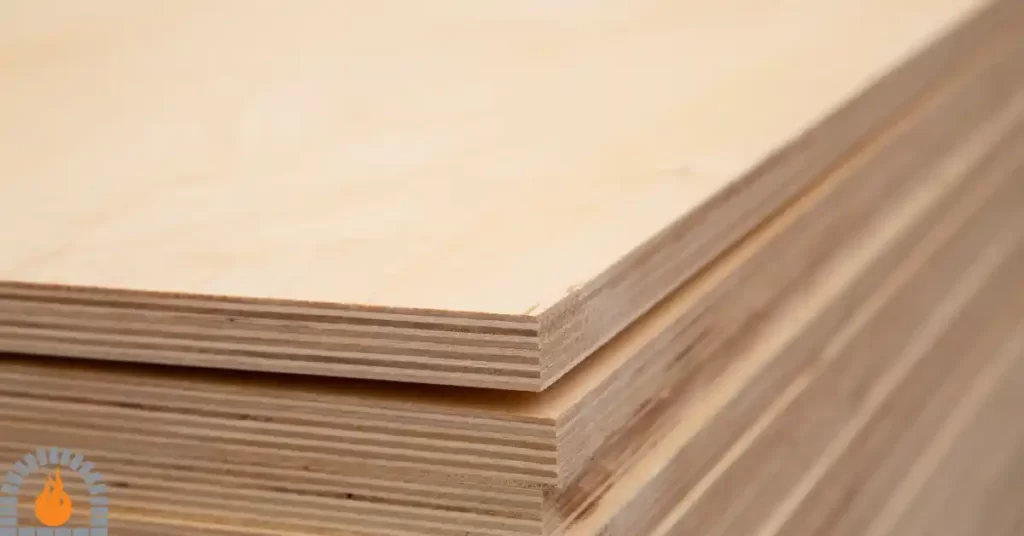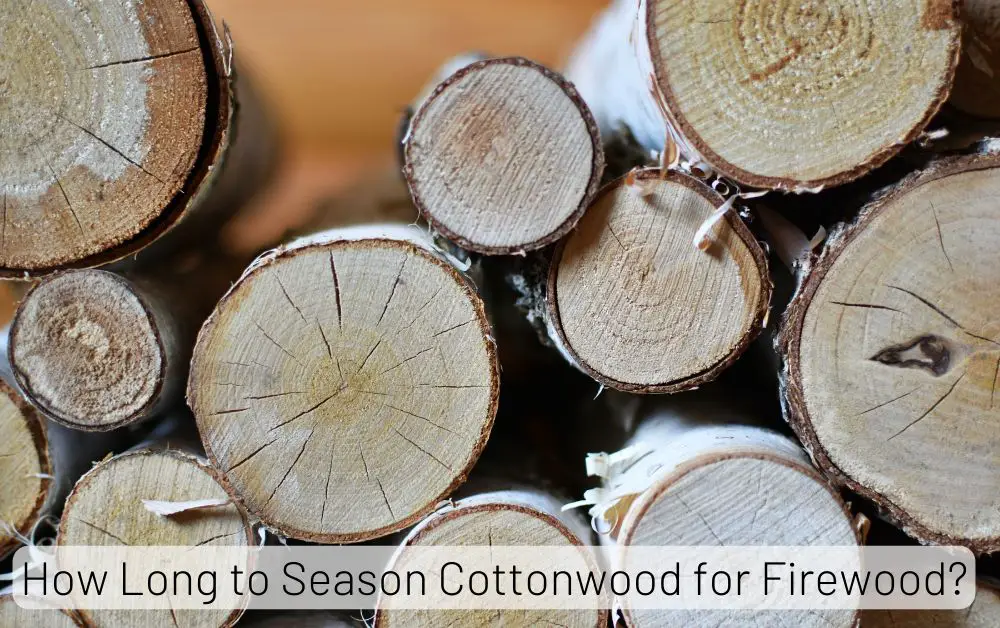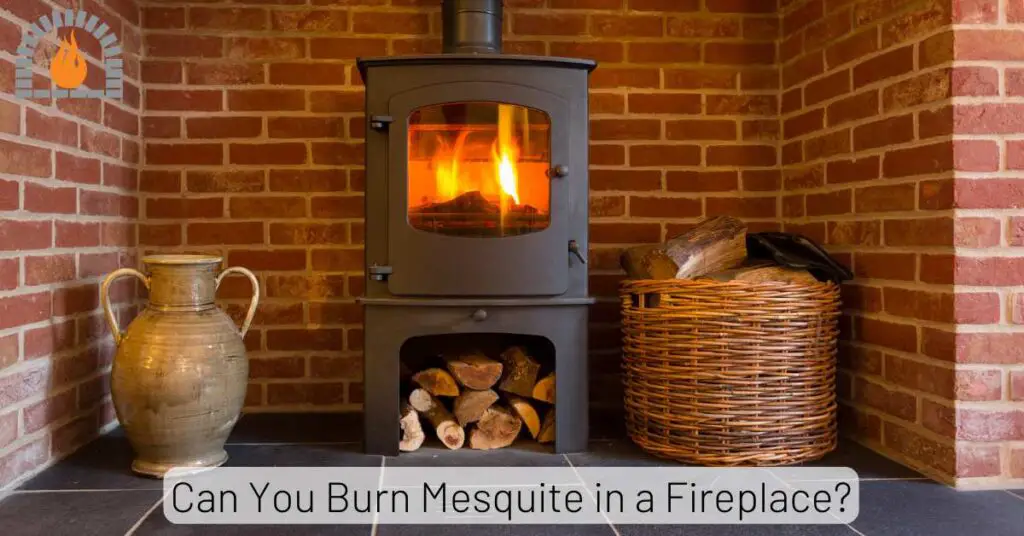Plywood is a versatile and commonly used material for woodworking and DIY projects. It’s renowned for its strength, flexibility, and cost-effectiveness. But have you ever wondered, “Can you burn plywood?” Burning Plywood might seem like an option for disposal or creating rustic aesthetics, but there are important factors to consider before you proceed.
Caution: Never burn Plywood in your fire pit or fireplace. Burning Plywood can release toxic fumes and pollutants into the air due to the presence of glues, resins, and other chemicals used in its manufacturing process. These fumes can be harmful to both your health and the environment.
If you need to dispose of Plywood, exploring safer and more environmentally friendly methods such as recycling, repurposing, or proper waste disposal per local regulations is recommended.
What is Plywood?
Plywood, a composite wood product made from layers of thinly sliced veneers, is commonly used in construction, furniture making, and crafting. Its layered structure and adhesive bonding provide structural stability and durability.
Is Burning Plywood Safe?
No, it is not safe to burn plywood. Plywood is typically treated with adhesives that may contain formaldehyde and other chemicals. When burned, these chemicals can release harmful fumes into the air, posing health risks to those nearby.
Burning the wood with a high glue content can release toxic and potentially carcinogenic substances.
Can You Burn Plywood?
Burning Plywood is prohibited in all 50 states of the United States due to its potential to emit hazardous fumes and pollutants into the air. This restriction is in place because Plywood contains glues, resins, and various chemicals that can release toxic substances when burned.
The resulting fumes pose significant risks to human health and can also contribute to environmental harm.

What Are the Cons of Burning Plywood?
Burning Plywood, while it may seem like a convenient way to dispose of it, has several significant cons that should be considered:
Toxic Emissions
Plywood is typically made using adhesives that contain formaldehyde and other potentially harmful chemicals.
When ignited, these chemicals can be released into the atmosphere as harmful emissions, presenting health hazards to those in proximity and exacerbating air pollution.
Air Quality Impact
The combustion produces smoke and particulate matter that can negatively affect air quality, especially in populated areas.
Deteriorating air quality can result in respiratory complications and other health concerns, especially for individuals with underlying medical conditions.
Contributing to Climate Change
Incinerating Plywood releases carbon dioxide (CO2) and additional greenhouse gases into the atmosphere, intensifying the effects of global warming and climate change.
This amplifies environmental difficulties and may yield enduring repercussions for the planet.
Legal Restrictions
Many jurisdictions have regulations and laws governing open burning, especially for materials like Plywood that can release harmful emissions.
Burning Plywood may be prohibited or subject to specific guidelines, and violating these regulations could result in fines or other penalties.
Negative Impact on Soil
The ashes from burned Plywood can contain harmful substances, which, when deposited into the soil, can degrade its quality and potentially harm plants, animals, and water sources.
Safe Alternative To Burning Plywood
Indeed, safer alternatives to plywood incineration exist, which can discharge detrimental chemicals and pollutants into the air.
Here are a few options:
Plywood can often be recycled, and some recycling centers may accept it. Check with your local recycling facilities to see if they have guidelines for accepting plywood.
If the plywood is still in decent condition, consider repurposing it for other projects. You could use it for shelving or crafting or even donate it to someone who can use it.
If untreated and has no harmful chemicals, you can break it down over time in a compost pile. However, this can take a while and might not be suitable for larger pieces.
If you’ve exhausted all other options, taking wood to a landfill that accepts construction materials is a safer alternative to burning. Make sure to follow local regulations and guidelines for waste disposal.
Get creative and turn it into something new and useful. For example, you could make planters, birdhouses, or outdoor furniture.
Local artisans, artists, or woodworking enthusiasts might be interested in using plywood for their projects. Reach out to see if they could make use of it.
Some organizations can make plywood for their projects or initiatives. For example, a local community garden might use plywood for building raised beds.
Safe Burning Woods For Fire pits & Fireplaces
When choosing the best wood for burning in a firepit and fireplace, you’ll want to consider factors such as heat output, burn time, aroma, and ease of splitting and lighting.
Hardwoods are generally preferred for their density and longer burn times, while softwoods ignite more easily and provide a pleasant aroma. Here are some popular options:
Best Hardwoods:
-
Oak: Oak Provides a steady, hot burn with minimal sparking. It’s one of the best hardwoods for both firepits and fireplaces.
-
Maple: Offers a consistent burn and produces a nice amount of heat. It also has a pleasant aroma.
-
Hickory: Known for its strong heat output and aromatic qualities. It’s great for adding a smoky flavor if you’re cooking over the fire.
-
Ash: Burns well, produces good heat, and splits easily. It’s a versatile choice for both heating and ambiance.
Best Softwoods:
-
Pine: Ignites easily and releases a pleasant aroma. However, it’s important to use it in moderation due to the higher resin content that can lead to creosote buildup in the chimney.
-
Cedar: Burns well, smells great, and repels insects. It’s a good option for outdoor firepits.
-
Fir: Lights quickly and offers a bright flame, making it a suitable kindling or firestarter wood.
It’s important to note that hardwoods are generally better for extended heating and overall fire longevity. At the same time, softwoods are great for starting fires and providing a quick burst of heat and ambiance.
Ensure the wood you’re using is properly seasoned (dried) to minimize smoke and creosote buildup.
You May Also Like To Read:
Final Thoughts: Can You Burn Plywood?
It is advisable to avoid burning plywood in your fire pits or fireplaces due to potential health risks. Instead, consider exploring safer alternative options.
Affiliate Disclosure: Fireplaceadviser.com is a participant in the Amazon Services LLC Associates Program. We may earn a commission when you click on certain links on this site and purchase.

Hello!! I am Jamal Khan. I often fix my home electric heaters and gas stove problems and research the common issues in the heating units to improve my knowledge and expertise. The aim of establishing fireplaceadviser.com is to share my expertise and knowledge with my audience.


















